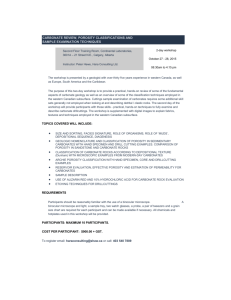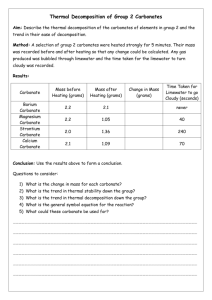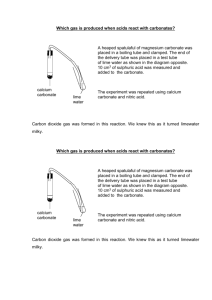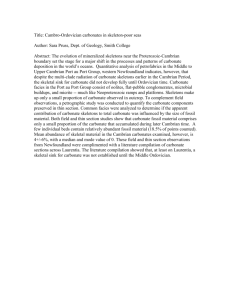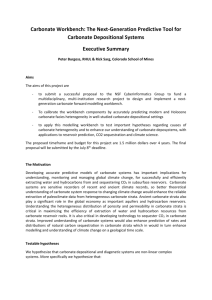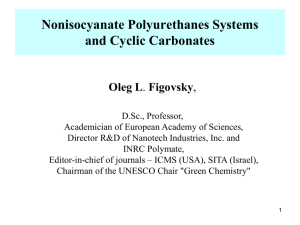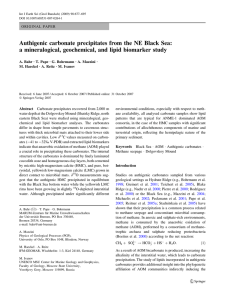presentation file
advertisement
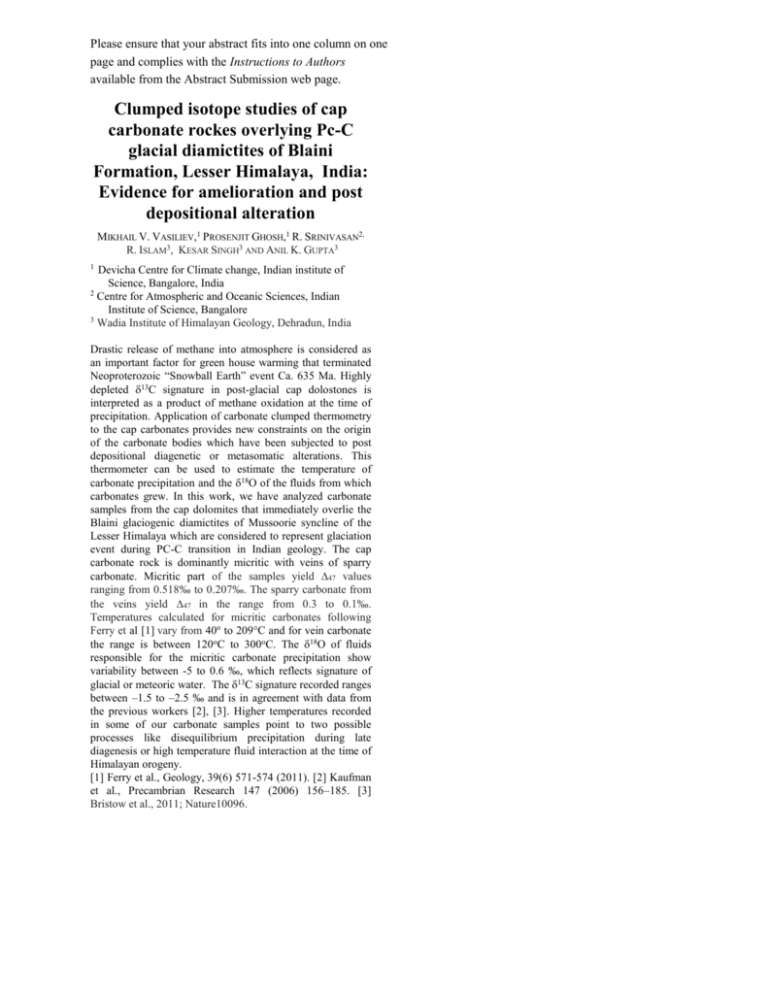
Please ensure that your abstract fits into one column on one page and complies with the Instructions to Authors available from the Abstract Submission web page. Clumped isotope studies of cap carbonate rockes overlying Pc-C glacial diamictites of Blaini Formation, Lesser Himalaya, India: Evidence for amelioration and post depositional alteration MIKHAIL V. VASILIEV,1 PROSENJIT GHOSH,1 R. SRINIVASAN2, R. ISLAM3, KESAR SINGH3 AND ANIL K. GUPTA3 1 Devicha Centre for Climate change, Indian institute of Science, Bangalore, India 2 Centre for Atmospheric and Oceanic Sciences, Indian Institute of Science, Bangalore 3 Wadia Institute of Himalayan Geology, Dehradun, India Drastic release of methane into atmosphere is considered as an important factor for green house warming that terminated Neoproterozoic “Snowball Earth” event Ca. 635 Ma. Highly depleted 13C signature in post-glacial cap dolostones is interpreted as a product of methane oxidation at the time of precipitation. Application of carbonate clumped thermometry to the cap carbonates provides new constraints on the origin of the carbonate bodies which have been subjected to post depositional diagenetic or metasomatic alterations. This thermometer can be used to estimate the temperature of carbonate precipitation and the 18O of the fluids from which carbonates grew. In this work, we have analyzed carbonate samples from the cap dolomites that immediately overlie the Blaini glaciogenic diamictites of Mussoorie syncline of the Lesser Himalaya which are considered to represent glaciation event during PC-C transition in Indian geology. The cap carbonate rock is dominantly micritic with veins of sparry carbonate. Micritic part of the samples yield 47 values ranging from 0.518‰ to 0.207‰. The sparry carbonate from the veins yield 47 in the range from 0.3 to 0.1‰. Temperatures calculated for micritic carbonates following Ferry et al [1] vary from 40o to 209°C and for vein carbonate the range is between 120oC to 300oC. The 18O of fluids responsible for the micritic carbonate precipitation show variability between -5 to 0.6 ‰, which reflects signature of glacial or meteoric water. The 13C signature recorded ranges between –1.5 to –2.5 ‰ and is in agreement with data from the previous workers [2], [3]. Higher temperatures recorded in some of our carbonate samples point to two possible processes like disequilibrium precipitation during late diagenesis or high temperature fluid interaction at the time of Himalayan orogeny. [1] Ferry et al., Geology, 39(6) 571-574 (2011). [2] Kaufman et al., Precambrian Research 147 (2006) 156–185. [3] Bristow et al., 2011; Nature10096.


